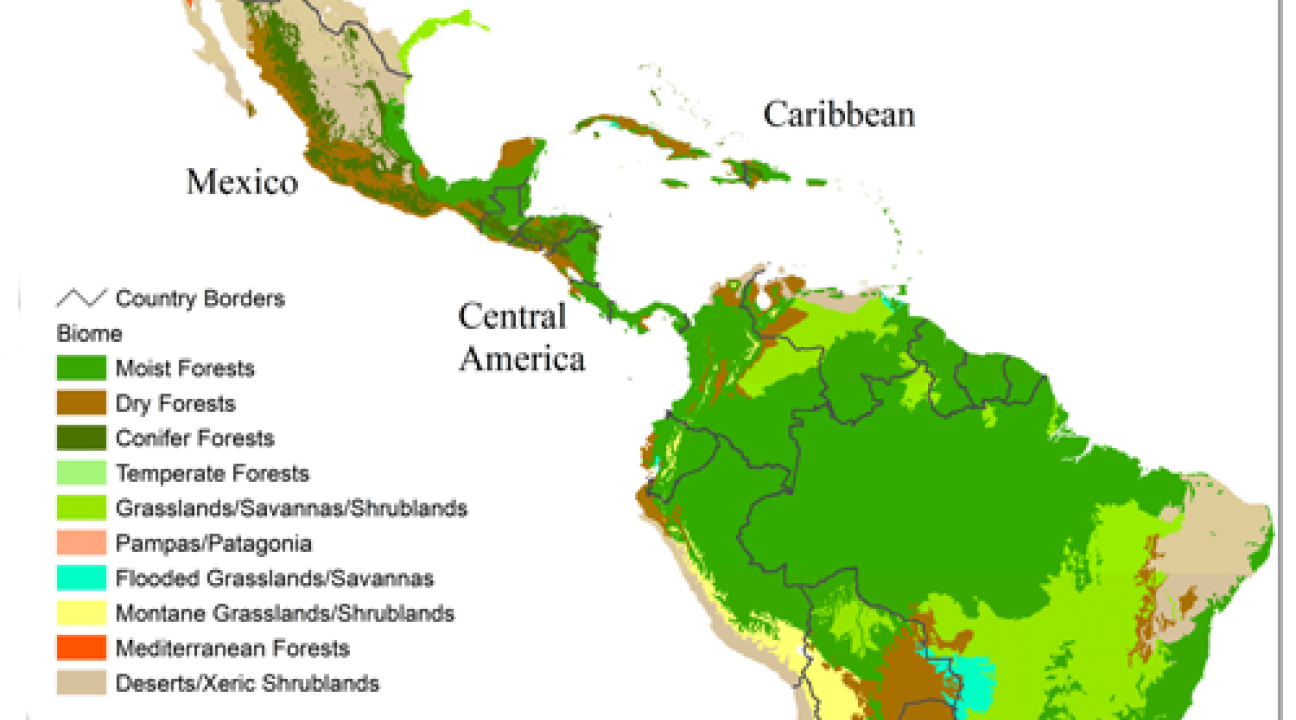Clark: Monitoring vegetation cover in protected areas at regional scales
Clark, M. L., Ruiz, J., Fandino, M. C., & López-Carr, D. (2021). Conservation priorities in terrestrial protected areas for Latin America and the Caribbean based on an ecoregional analysis of Woody Vegetation Change, 2001–2010. Land, 10(10), 1067.

We determined protected area coverage and woody vegetation change in Latin America and the Caribbean at biome and ecoregion scales, for the years 2001 to 2010. For each ecoregion’s terrestrial protected area (TPA) and unprotected area, a linear regression of woody vegetation area against time (10 years) was used to estimate 2001 and 2010 woody vegetation, respectively. We calculated a conversion-to-protection index, termed the Woody Conservation Risk Index, and identified trends in relation to existing conservation priorities. As a whole, the region lost 2.2% of its woody cover. High woody cover loss was observed for the Moist Forests (3.4% decrease) and the Flooded Grasslands/Savannas (11.2% decrease) biomes, while Mediterranean Forests exhibited a 5.8% increase. The Dry Forest Biome, the most threatened biome worldwide, experienced a 2% regional gain, which was surprising as we expected the opposite given a net regional loss for all biomes. Woody cover was more stable in TPAs in comparison to areas with no protection. Deforestation inside and surrounding TPAs remains high in humid ecoregions. High overall ecoregion deforestation, with stable TPAs, characterized some Amazonian ecoregions, the Dry Chaco, and moist forests on the eastern Andean foothills of Ecuador and Peru. Woody regrowth inside and outside of TPAs was observed in the Sonoran-Sinaloan transition subtropical dry forests and the Sierra Madre Occidental pine-oak forests in Mexico. Read more here


